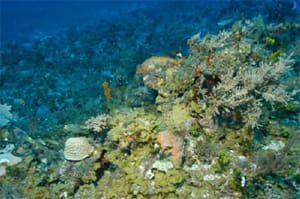In late November, the National Oceanic and Atmospheric Administration (NOAA) and the National Park Service (NPS) signed a memorandum of understanding (MOU) with Cuba’s Ministry of Science, Technology and Environment (CITMA). The MOU aims to facilitate joint efforts concerning science, stewardship and management related to Marine Protected Areas (MPAs). The MOU also includes a sister MPA program to foster conservation and understanding of natural marine resources between both countries, sharing technical and scientific data and promoting education and outreach initiatives.
“We recognize we all share the same ocean and face the same challenges of understanding, managing and conserving critical marine resources for future generations,” said Dr. Kathryn Sullivan, NOAA administrator, who was in Cuba for the signing of the agreement. “The opportunity for international cooperation in marine conservation is invaluable and this moves us closer to ensuring a healthy and productive ocean for everyone.”
National Park Service Director Jonathan B. Jarvis said, “Cooperation among protected area managers of Cuba and U.S. national park and marine sanctuaries is a great way to preserve our shared natural heritage of the wider Caribbean and Gulf of Mexico regions. After all, fish, marine mammals, sea turtles, birds and other marine life exist in ecosystems that rarely fall within maps drawn by man.”
 |
|
The Cuban shoreline. |
|
Gonzalo Cid/NOAA |
The initial sister MPA relationship will focus on Guanahacabibes National Park in Cuba along with its offshore Bank of San Antonio, and the Flower Garden Banks and Florida Keys National Marine Sanctuaries managed by NOAA’s Office of National Marine Sanctuaries, and the Dry Tortugas and Biscayne national parks managed by the National Park Service.
Flower Garden Banks National Marine Sanctuary, developed on salt domes rising above the sea floor in the Gulf of Mexico, provides habitat for a variety of tropical wildlife, including hundreds of shallow-water Caribbean reef fish and invertebrates, manta rays, whale sharks and large coral heads.
Florida Keys National Marine Sanctuary protects the world’s third-largest barrier reef and is home to one of North America’s most diverse communities of underwater plants and animals. Nearly 6,000 marine species inhabit the coral reefs, mangrove forests, seagrass meadows and other habitats.
Guanahacabibes National Park, one of Cuba’s largest protected areas, was declared a Biosphere Reserve by UNESCO in 1987. With diverse marine and coastal habitats, the park is one of the most important places in Cuba where sea turtles come ashore to lay eggs, and it protects one of Cuba’s healthiest coral reef systems. The offshore Banco de San Antonio supports a lush coral reef located at the confluence of the currents that flow from the Caribbean into the Gulf of Mexico. As a result, the bank’s coral reefs will have significant influences on the condition of coral reefs in the Gulf of Mexico and South Florida.

